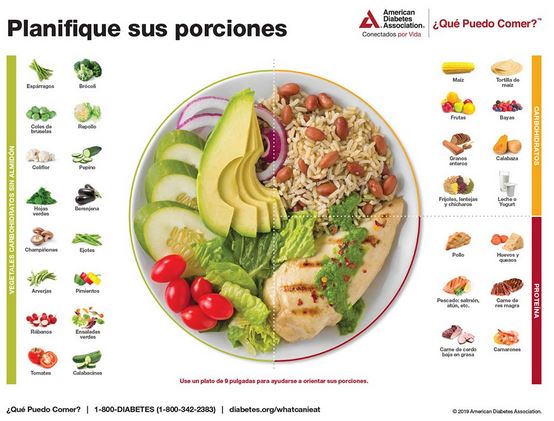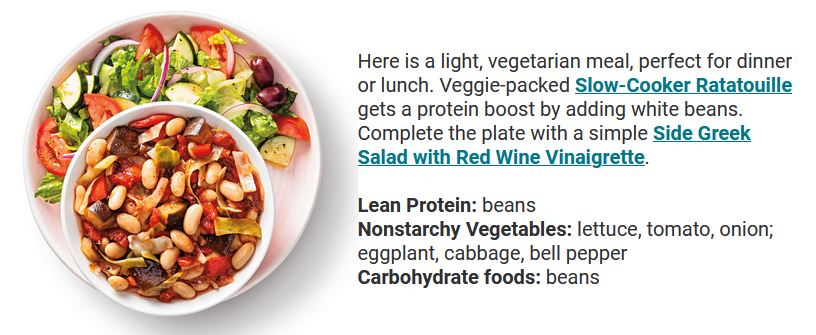Does Intermittent Fasting Really Lead to Weight Loss?
In health care settings across the country, people with diabetes and providers have been asking if intermittent fasting is effective at helping with weight loss. Finally, a randomized outpatient study provides some answers so we can accurately respond to this frequently asked question.
According to a recent study published in The New England Journal of Medicine, “a regimen of time-restricted eating was not more beneficial with regard to reduction in body weight, body fat, or metabolic risk factors than daily calorie restriction.”
In this study, 139 participants were randomized into two groups. Both groups were placed on a limited calorie diet. Men in the study were limited to a 1500 to 1800 kcal per day diet while women were limited to a 1200 to 1500 kcal per day diet.
The main difference, was the eating time frame.
The intermittent fasting group ate their calorie-restricted diet between the limited hours of 8:00 am to 4:00 pm. Which is a fasting period of 16 hours and an eating window of 8 hours.
The control group also followed the calorie restrictions but could eat their assigned calories at whatever time.
Results After One Year
After a 12-month period of following these diets, each group was evaluated for changes in body weight, body fat, waist circumference, body-mass index (BMI), and metabolic risk factors. 85% of participants completed the trial.
The participants in the time-restricted group had a mean weight loss from baseline of -8.0 kg while the calorie restriction only group had a 6.3 kg mean weight loss from baseline. While the time-restricted group had a higher weight loss, it wasn’t enough to reach statistical significance.
Additionally, there were no statistically significant changes in waist circumference, body fat, body lean mass, BMI, blood pressure, and other metabolic risk factors between the two groups.
The conclusion is that time-restricted eating was not significantly beneficial in weight loss in comparison to following a calorie-restricted diet.
To read more, click here.
Enjoy 5 Servings of Magic a Day
As a nine-year-old, I couldn’t wait for my Grandparents to arrive for Christmas. Since they lived in Canada and we lived in California, we didn’t get to see them enough. Plus, they had eight kids and an old station wagon that could barely make the 1000 mile journey.

In December of 1972, as they tumbled out of the station wagon onto our front lawn, my Grandfather scooped me up in his arms, gave me the biggest hug, and presented me with a bag of beautiful mandarin oranges. His face was glowing with joy as we each peeled the thin skins of that winter citrus fruit and slowly ate each segment. Me and my grandfather had never tried mandarins before and we both fell in love with this magical fruit that day, sitting on my front porch, together. This moment is one of my fondest childhood memories.
Fruit and vegetables ARE magical. They are loaded with fiber, micronutrients, energy, and mostly smell and taste so good. They are mood boosters, feed our healthy gut bacteria, and can lead to meaningful connections. I am a certified vegetable and fruit aficionado, happily sharing my enthusiasm for these fiber and nutrient powerhouses with the people I serve at our rural community clinic. However, many people are not eating the recommended daily dose.
How do we help others rekindle their connection to fruit and vegetables?
Most Americans eat only one serving of fruit and 1½ servings of vegetables daily, far less than what’s recommended. And a quarter of the vegetables consumed are potatoes, and half of those are consumed as fries. I think we need to keep it simple and start with realistic goals that people can achieve. I am excited to share this research with you in the hopes of increasing fruit and veggie intake in America, one bite at a time.
How many servings of Fruit and Veggies a Day to improve health outcomes?
A 2021 study in the journal Circulation backs up the long-standing nutritional guideline that consuming five daily servings of a variety of fruits and vegetables increases lifespan. More specifically, the study encouraged participants to consume at least 2 servings of fruits and 3 servings of vegetables daily.
“People who eat five servings of vegetables and fruit daily have 13 percent lower risk of all-cause death compared to people who eat two servings of fruit and vegetables per day,” says Dong Wang, a faculty member at Harvard Medical School and Brigham and Women’s Hospital in Boston, and one of the study’s researchers. They also had a 12% lower risk of death from cardiovascular disease, a 10% lower risk from cancer, and a 35% lower risk from respiratory disease, compared with people who ate just two daily servings.
The Dietary Guidelines for Americans recommend 2½ cups of vegetables and two cups of fruit daily, which totals about nine servings per day. One “serving” is a half-cup of any vegetables or fruits or a whole cup of salad greens. This study found that after 5 servings a day, there was no additional decrease in mortality. In a way, this is good news.
If we can just encourage people to eat 2 pieces of fruit a day and one serving of veggies with each meal, we are making a significant impact in improving health outcomes.

Eating a rainbow of fruits and vegetable is key because they each contain different beneficial nutrients and antioxidants. According to the study, fruits and vegetables, including leafy greens, citrus fruits, and berries, were associated with lower mortality.
However, starchy vegetables such as peas, corn, and potatoes were not associated with a reduced risk of death or chronic diseases. The study results didn’t find harm or an increased risk of mortality from these options, but they also didn’t decrease mortality. Consider them neutral.
More good news – It doesn’t seem to matter whether people consume fresh, frozen or canned fruits and vegetables. They all offer similar nutrient values. The main consideration is promoting affordable and appealing fruits and veggies based on the individuals’ taste and preferences.
More resources from our Article Library
Read more in this Circulation Article.
Want to learn more about this topic?
You are invited to join our Virtual Conference on April 13 -15th. Our expert speaker, Ashley LaBrier, MS, RD, CDCES, will be providing a half-day presentation on this important topic!
Virtual DiabetesEd Specialist Conference
30+ CEs | April 13-15, 2022

Whether you are new to diabetes or a seasoned expert, you’ll benefit from this virtual conference with the latest research plus critical content that you can immediately apply to your clinical practice.
If you are seeking a state-of-the-art review of current diabetes care, this course is for you. Our team has been fine-tuning this course for over fifteen years, and we know what you need. This program can also be a great addition to your CDCES or BC-ADM exam study plan.
Download Course Schedule | Download Course Flyer
Join us LIVE for this Virtual Course and enjoy a sense of community!
Team of expert faculty includes:
- Diana Isaacs, PharmD, BCPS, BC-ADM, BCACP, CDCES – Educator of the Year, 2020
- Coach Beverly Thomassian, RN, MPH, CDCES, BC-ADM
- Ashley LaBrier, MS, RD, CDCES, Diabetes Program Coordinator
Download Course Schedule | Download Course Flyer
Two Registration Options
Virtual DiabetesEd Specialist Conference Deluxe | 30+ CEs
Deluxe Option for $499: Virtual Program includes:
- Q & A Session with the instructor after each webinar.
- LIVE Presentations by our team of experts.
- State of the art review of current diabetes care and technology.
- Resources for each session.
- Access to free podcasts and video recordings within a week of each live session for one year.
Deluxe Version includes Syllabus, Standards and Swag*:
- Diabetes Educator Course 2022 Syllabus Hard Copy – over 100 pages -This spiral-bound workbook contains the printed version of all of the instructor’s slides.
- ADA 2022 Standards of Care Book -The ADA Standards of Medical Care in Diabetes is a key resource for healthcare professionals involved in diabetes care, education, and support.
- DiabetesEd Services highlighters, Medication PocketCard, Tote Bag and Pen
Virtual DiabetesEd Specialist Conference Basic | 30+ CEs
Deluxe Option for $499: Virtual Program includes:
- Q & A Session with the instructor after each webinar.
- LIVE Presentations by our team of experts.
- State of the art review of current diabetes care and technology.
- Resources for each session.
- Access to free podcasts and video recordings within a week of each live session for one year.
Don’t worry if you can’t make it live. Your registration guarantees access to the recorded version in the Online University.
All hours earned count toward your CDCES Accreditation Information
Sign up for Diabetes Blog Bytes – we post one daily Blog Byte from Monday to Friday. And of course, Tuesday is our Question of the Week. It’s Informative and FREE! Sign up below!
The use of DES products does not guarantee the successful passage of the CDCES exam. CBDCE does not endorse any preparatory or review materials for the CDCES exam, except for those published by CBDCE.
Is Metformin associated with Low B12 levels?
Metformin is one of the most widely dispensed oral diabetes medications for good reason. It works great, lowering A1c 1-2% points, with an added benefit of dropping LDL cholesterol levels. It doesn’t cause hypoglycemia or weight gain and it is incredibly cheap. Many pharmacies offer a 3 month supply of this highly effective glucose-lowering medication for $10 or less, and that’s without insurance. This medication also seems to boost the diversity of the gut microbiota, in particularly increased levels of the very beneficial Akkermansia muciniphila.
However, it does have a few drawbacks. A small group of people on metformin will experience a B12 deficiency. This B12 deficiency may manifest as neuropathic pain or anemia.
Plus, a percentage of people will experience upset stomach, bloating, and diarrhea. People with these complaints will often respond better to the extended-release version (metformin XR), which isn’t any more expensive and it can be taken once a day. See our Mediation PocketCards for more info.
How prevalent is B12 Deficiency with metformin?

Currently, the ADA Standards have no clear recommendation for checking B12 for those on metformin, but it does note that long-term metformin use is associated with B12 deficiencies and that “measuring B12 levels should be considered for those with type 1 diabetes, peripheral neuropathy or unexplained anemia”.
To add to this, a study published this month in Human Nutrition and Metabolism, found the prevalence of B12 deficiency appears to be about 17% in people on metformin therapy. The highest rates of B12 deficiency were seen in those taking metformin for 2 years. Moreover, vitamin B12 deficiency is influenced by the occurrence and duration of diabetes.
They also measured the intake of vitamin B12 in the daily diet of the study participants. Those with lower vitamin B12 blood levels were also consuming less foods rich in vitamin B12 in their daily meal plan.
Recommendations for Regular B12 Monitoring and Replacement
The authors of this article suggest that routine monitoring for vitamin B12 serum levels is needed in people with T2DM, particularly when metformin is used for more than 2 years with a dose of over 1000 mg per day. They also recommend further studies are needed to assess the correlation between metformin duration and dose and patients with T2DM and other metabolic syndromes.
B12 replacement therapy
This article, nor the ADA Standards recommend dosing for B12 replacement therapy. However, based on several articles, including this 2005 Cochrane review, high-dose oral replacement (1 mg to 2 mg per day) for B12 deficiency, seems to be as effective as parenteral B12 administration for correcting anemia and neurologic symptoms.
Conclusion – Vitamin B12 deficiency is associated with worsening nerve pain and anemia. Testing B12 levels for those on long-term metformin therapy, especially for those taking more than 1000 mg of metformin a day seems like a reasonable approach. Increasing the intake of foods high in vitamin B12 and providing oral B12 replacement therapy of 1 mg to 2 mg a day, are both helpful interventions to boost B12 levels.
Resources from our Article Library
Plant Based Eating Resources and Recipes
Carbohydrate Counting Resource Page
Want to learn more about this topic? Enroll in our
Meds Management for Type 2 Standards | 1.5 CEs
Recorded & Ready to Watch!

Coach Beverly will highlight the key elements of the latest Medication Guidelines by AACE and ADA. We will explore clinical factors to consider when determining the best strategy to improve glucose management in people with type 2 diabetes and other co-conditions. There will be a special focus on cardiovascular risk reduction and renal protection.
Objectives:
- Describe the role of Diabetes Care and Education Specialists in stopping clinical inertia
- Discuss using the latest ADA and AACE Guidelines to determine the best therapeutic approach.
- Using the ADA and AACE Guidelines, describe strategies to initiate and adjust injectable therapy.
Enroll in the entire
Level 2 | Standards of Care Intensive Series | 20 CEs | $199
2022 Updates Airs March 17 – May 26, 2022

This bundle is specifically designed for healthcare professionals who want to learn more about the ADA Standards of Diabetes Care for their clinical practice or for those who are studying for the BC-ADM or the CDCES certification exam.
- Recorded on December 15, 2021 – Hyperglycemic Crises, DKA & HHS Standards | 1.0 CE
- Recorded on December 21, 2021 – Assessing and Promoting Well-Being: From Population Health to a Person-Centered Approach Standards | 1.5 CEs
- Recorded on February 3, 2022 – ADA Standards of Care | 2.0 CEs
- Recorded on March 17, 2022 – Setting up a Successful Diabetes Program 1.5 CEs
- Recorded on March 22, 2022 – Lower Extremity Assessment 1.5 CEs
- Recorded on March 24, 2022 – Meds Management for Type 2 – 1.5 CEs
- April 26, 2022 – Microvascular Complications, Eye, Kidney Nerve Disease 1.5 CEs
- April 28, 2022 – Critical Assessment of Diabetes Patient 2.0 CEs
- May 10, 2022 – Cardiovascular Disease and Diabetes Standards 1.5 CEs
- May 12, 2022 – Older Adults and DIabetes 1.5 CEs
- May 17, 2022 – Tots to Teens – Diabetes Standards 1.5 CEs
- May 19, 2022 – Pregnancy and Diabetes 1.5 CEs
- May 26, 2022 – Hospital and Hyperglycemia 1.5 CEs
Accreditation: Diabetes Education Services is an approved provider by the California Board of Registered Nursing, Provider 12640, and Commission on Dietetic Registration (CDR), Provider DI002. Since these programs are approved by the CDR it satisfies the CE requirements for the CDCES regardless of your profession.
The use of DES products does not guarantee the successful passage of the CDCES exam. CBDCE does not endorse any preparatory or review materials for the CDCES exam, except for those published by CBDCE.
Sign up for Diabetes Blog Bytes – we post one daily Blog Byte from Monday to Friday. And of course, Tuesday is our Question of the Week. It’s Informative and FREE! Sign up below!
[yikes-mailchimp form=”1″]The use of DES products does not guarantee the successful passage of the CDCES exam. CBDCE does not endorse any preparatory or review materials for the CDCES exam, except for those published by CBDCE.
What is the Best Overall Diet?
A panel of 27 experts convened to rate and determine which of the top forty diets was best? It is like the Oscar’s for the best meal plan.
They scored each diet approach based on:

- Ease of following
- Ability to produce short and long-term weight loss
- Nutritional completeness
- Safety
- Potential for preventing diabetes and CVD.
The U.S. News and World Report Health Team of 27 experts, rated over 40 different diets with a score of one to five, five being the highest score.
The winning meal plan focuses on whole grain, fruits, and vegetables with lean proteins. It also ranked first in the categories of best diets for healthy eating, easiest diets to follow, best diets for diabetes, and best plant-based diets; it tied with best heart-healthy diets for the No. 1 spot.
There was a clear choice for the winner “because it is really not a diet. It is more a lifestyle of eating”, said Fatima Cody Stanford, MD, MPH, MPA, MBA, FAAP, FACP, FAHA, FAMWA, FTOS, a Healio Primary Care Peer Perspective Board Member and one of the U.S. News & World Report panelists.
For the fifth year in a row, the Mediterranean Diet took home the Nutrition Oscar for best meal planning approach by the U.S. News & World Report. It was also ranked as the best meal plan for people living with diabetes followed in second place by the Flexitarian Diet.
The American Diabetes Association Standards also recognize the Mediterranean Diet, along with the Plate Method, Carbohydrate Counting, plant-based eating, and the DASH Diet as top contenders for healthy meal planning approaches based on current evidence. For people living with diabetes, the emphasis is on individualization. No one meal planning approach works for everyone. Plus, the cost of the plan is also a major factor in the decision-making process.
Most importantly, the ADA recommends a referral to a Registered Dietitian upon new diagnosis of diabetes and at least annually or if there is any change in health status. Studies show that meeting with an RD lowers A1c by 1-2%.
More resources from our Article Library
Want to learn more about Medical Nutrition Therapy?
You are invited to join our Virtual Conference on April 13 -15th. Our expert speaker, Ashley LaBrier, MS, RD, CDCES, will be providing a half-day presentation on this important topic!
Virtual DiabetesEd Specialist Conference
30+ CEs | April 13-15, 2022

Whether you are new to diabetes or a seasoned expert, you’ll benefit from this virtual conference with the latest research plus critical content that you can immediately apply to your clinical practice.
If you are seeking a state-of-the-art review of current diabetes care, this course is for you. Our team has been fine-tuning this course for over fifteen years, and we know what you need. This program can also be a great addition to your CDCES or BC-ADM exam study plan.
Download Course Schedule | Download Course Flyer
Join us LIVE for this Virtual Course and enjoy a sense of community!
Team of expert faculty includes:
- Diana Isaacs, PharmD, BCPS, BC-ADM, BCACP, CDCES – Educator of the Year, 2020
- Coach Beverly Thomassian, RN, MPH, CDCES, BC-ADM
- Ashley LaBrier, MS, RD, CDCES, Diabetes Program Coordinator
Download Course Schedule | Download Course Flyer
Two Registration Options
Virtual DiabetesEd Specialist Conference Deluxe | 30+ CEs
Deluxe Option for $499: Virtual Program includes:
- Q & A Session with the instructor after each webinar.
- LIVE Presentations by our team of experts.
- State of the art review of current diabetes care and technology.
- Resources for each session.
- Access to free podcasts and video recordings within a week of each live session for one year.
Deluxe Version includes Syllabus, Standards and Swag*:
- Diabetes Educator Course 2022 Syllabus Hard Copy – over 100 pages -This spiral-bound workbook contains the printed version of all of the instructor’s slides.
- ADA 2022 Standards of Care Book -The ADA Standards of Medical Care in Diabetes is a key resource for healthcare professionals involved in diabetes care, education, and support.
- DiabetesEd Services highlighters, Medication PocketCard, Tote Bag and Pen
Virtual DiabetesEd Specialist Conference Basic | 30+ CEs
Deluxe Option for $499: Virtual Program includes:
- Q & A Session with the instructor after each webinar.
- LIVE Presentations by our team of experts.
- State of the art review of current diabetes care and technology.
- Resources for each session.
- Access to free podcasts and video recordings within a week of each live session for one year.
Don’t worry if you can’t make it live. Your registration guarantees access to the recorded version in the Online University.
All hours earned count toward your CDCES Accreditation Information
Sign up for Diabetes Blog Bytes – we post one daily Blog Byte from Monday to Friday. And of course, Tuesday is our Question of the Week. It’s Informative and FREE! Sign up below!
The use of DES products does not guarantee the successful passage of the CDCES exam. CBDCE does not endorse any preparatory or review materials for the CDCES exam, except for those published by CBDCE.
A Diabetes Nurse Takes a Fresh Look at the Plate Method
For the past year, as the only diabetes nurse educator at a local FQHC clinic, I have had to fine-tune my nutrition coaching skills. We are hoping to hire a dietitian soon, but in the meantime, I am trying to find my nutrition groove as I work with Spanish-speaking clients, kids to elders, and everyone in between.
For many years, I shied away from using the plate method and mostly relied on dietary recalls and figuring out changes needed to improve the health quotient of their current meal plan.
However, as people walk into my clinic room, I am surprised by how many are drawn to the oversized healthy plate place-mats sitting on my display table. They ask, “Can I eat these foods?” This sparks a lively and constructive conversation on new approaches to eating.
Based on this enthusiastic response, after I complete the dietary recall, I jump into our food conversation using the plate method. Whether am I coaching kids to elders on healthy eating, this approach seems to get the best response. If needed, I will dive into more detail around carb serving sizes and matching carbs to insulin.
Using the plate method allows me to keep it person-centered and help them include their favorite foods to maintain the pleasure of eating.
How I use the Plate Method:
This teaching tool is ideal because it has appealing pictures of the different foods that make it easy to provide a quick review of the food groups and their impact on blood sugars and overall health.
In addition, these plates represent a variety of cultures and eating styles, and come in several languages. Here is the one in Spanish I use all the time.

5 Main Pointers
Take a vegetable tour: I start on the left side of this place mat, which has pictures of a variety of healthy high fiber vegetables, which I emphasize are low in calories and packed with nutrients. Then I ask which vegetables are they currently eating and provide encouragement to continue and expand their veggie choices, if possible. “Enjoy an abundance of these super foods, that fill you up, feed your good bacteria, decrease inflammation, help manage blood sugars and support a healthy weight.”
Next stop – CARBS and Beans – There is a lot of misinformation around the carbohydrate group and many people tend to lump them in the “bad food” category. We discuss the carbs they are consuming and discuss some they might be missing out on, like fruits or tortillas, thinking they were off-limits. I encourage 3 servings of fruit daily, (the size of a closed fist) spread throughout the day.
Beans, the magical fruit! I make an intentional effort to sing the praises of beans. They are the inexpensive, fiber-packed nutrition superstars and they are so versatile.
A big focus with carbs is portion sizes. The actual amount of carbs someone is consuming is really easy to underestimate. For this part, I DO pull out my rubber food models, which are as popular as ever.
Canned and Frozen veggies are good for you. Many people may not have access to fresh vegetables or refrigeration. Canned vegetables and soups are often a cheaper, more realistic option. They can choose low sodium if they have hypertension or they can rinse off salty, often less expensive canned vegetables. If they have access to a freezer, frozen veggies offer as many nutrients (and sometimes more) than fresh vegetables, especially if they have been on the shelf for a while.
I encourage starting meals with soups, salads, or water if they are trying to lose weight.
Protein and meats – Our discussion focuses on serving sizes and healthy ways to prepare low fat or skinless meats. If their LDL cholesterol is above target, we will include a discussion on meat alternatives and review cheese consumption.
Sugary Beverages, Sweet Treats, and Snacks – Coffee with a little cream and sugar is fine, but those coffee drinks topped with whip cream can pack lots of carbs and unwanted calories. Replacing sports drinks and sodas with water or unsweetened tea can make a huge difference in glucose levels and body weight.
Mindless muching. I find many people munching on snacks and sweet treats (especially in the evenings) out of boredom or in response to stress. Helping people ask themselves, “Am I really hungry?” before that first bite can make a big difference. Also keeping track of the emotion associated with “mindless snacking” can help people discover other strategies to deal with uncomfortable feelings.
The plate method is simple, engaging of fun. We can customize the plate based on their food favorites and help individuals and families improve their health and feel better!
Resources To Check Out
Get Started on the ADA Diabetes Food Hub – Sign up to save recipes, create a personalized grocery list, and more.
Please visit the ADA’s Diabetes Food Hub recipe page.
They have an abundance of recipes based on budget, preferred foods, time of day, etc… Plus, they also provide the nutrition facts, and it’s FREE!
ADA website: https://www.diabetesfoodhub.org/

Check out Awesome photos and ideas modeling the “Diabetes Plate Method”
USDA Plate Method Website has lots of great info
THE EXCHANGE LIST for Diabetes
Join us for our live streaming of our brand new course
Level 4 | Insulin Calculation Workshop – From Injections to Pumps | 1.5 CEs

Determining basal and bolus rates for multiple daily injections or insulin pumps can seem overwhelming. This 90-minute course provides participants with a step-by-step approach to determine basal rates, bolus ratios and how to problem solve when blood glucose levels aren’t on target. During this 90-minute course, Coach Beverly will provide abundant case studies to give participants hands-on practice and build confidence when calculating insulin doses for a variety of situations.
Objectives:
- Describe using formulas to determine appropriate insulin dosing.
- Discuss strategies to determine and fine-tune basal insulin dose
- Describe how to determine and fine-tune bolus rates including coverage for carbs and hyperglycemia.
- Using a case study approach, utilize calculations to determine the best insulin dosing strategy.
Sign up for Diabetes Blog Bytes – we post one daily Blog Byte from Monday to Friday. And of course, Tuesday is our Question of the Week. It’s Informative and FREE! Sign up below!
[yikes-mailchimp form=”1″]Accreditation: Diabetes Education Services is an approved provider by the California Board of Registered Nursing, Provider 12640, and Commission on Dietetic Registration (CDR), Provider DI002. Since these programs are approved by the CDR it satisfies the CE requirements for the CDCES regardless of your profession.*
The use of DES products does not guarantee the successful passage of the CDCES exam. CBDCE does not endorse any preparatory or review materials for the CDCES exam, except for those published by CBDCE.
Plant-Based Eating Resources | Free Resource Friday
It’s National Nutrition Month!

We have compiled a list of plant-based therapy articles and resources to celebrate the importance of nutrition.
Sign up for Diabetes Blog Bytes – we post one daily Blog Byte from Monday to Friday. And of course, Tuesday is our Question of the Week. It’s Informative and FREE! Sign up below!
[yikes-mailchimp form=”1″]
Accreditation: Diabetes Education Services is an approved provider by the California Board of Registered Nursing, Provider 12640, and Commission on Dietetic Registration (CDR), Provider DI002. Since these programs are approved by the CDR it satisfies the CE requirements for the CDCES regardless of your profession.*
The use of DES products does not guarantee the successful passage of the CDCES exam. CBDCE does not endorse any preparatory or review materials for the CDCES exam, except for those published by CBDCE.
Happy Registered Dietitian Nutritionist Day! | Join the Celebration
Registered Dietitian Nutritionists are the food and nutrition experts who can translate the science of nutrition into practical solutions for healthy living.
Some of my favorite people are RD/RDNs. I’ve been blessed to teach with many inspiring, kind, knowledgeable and dynamic dietitians over a span of more than 20 years. They are trailblazers and advocates for improving the health of our communities, in both the inpatient and outpatient settings. They have the best teaching tools (who doesn’t love the rubber grapes, food samples and empty cereal boxes) and a breadth of knowledge that they excitedly share with their diabetes community and colleagues alike.
To celebrate Registered Dietitian Nutritionist Day, we are interviewing an emerging leader in the field, Ashley LaBrier.
Interview with Speaker, Ashley LaBrier, MS, RD, CDES

Ashley LaBrier, MS, RD, CDES, is an innovator in the field of diabetes, nutrition, and technology. Ashley is a consultant, and the Diabetes Education Program Coordinator at the Salinas Valley Medical Clinic’s Diabetes & Endocrine Center.
Ms. LaBrier is passionate about providing person-centered education to empower those who live with diabetes. Having been diagnosed with type 1 diabetes herself nearly 20 years ago, she combines her professional knowledge with personal experience and understanding.
Meet Ashley at our Virtual Diabetes Specialist Course on April 17, 2021.
1. Question – What do you love about being a RD and Diabetes Specialist?
Ms. Labrier – There are a few things I REALLY love about being a dietitian and working with those living with diabetes:
At our clinic, education visits are purposely scheduled to allow adequate time to really understand the needs of each individual and make personalized suggestions. I LOVE that our work allows us to get to know the people we work with so intimately. This knowledge ultimately translates into providing meaningful support based on individual needs.
I also love teaching group education classes. There are few things more energizing than a room full of people who have come together to learn more about their diabetes. These classes always lead to great questions, dialogue, and connection. Hearing people leave an education class feeling empowered to conquer their diabetes and live a more healthful life is so satisfying for me personally and professionally.
Lastly, translating nutrition and diabetes so it “makes sense” – I find it satisfying to see that “light bulb moment” after explaining a new concept.
Question – How do you anticipate nutrition recommendations changing for people with diabetes lives over the next few years?
Ms. LaBrier – I’m not sure how nutritional guidelines will change in the next few years, but I’d like to see more research exploring the long-term health impact of the popular diets, particularly the ketogenic diet and other higher fat and protein diets. I also hope that dietary guidelines begin to factor in the social and environmental consequences of what we eat, not just nutrition alone. What we eat impacts our health and the planet – sustainability is key.
Question – Over the past year, what has been most challenging about providing diabetes care during the pandemic?
Ms. LaBrier – The pandemic has brought so much uncertainty to our lives. In working with our participants at the clinic, many have lost their jobs and are experiencing financial hardship. Some are busy caring for children or elderly or have lost a loved one. Others are more isolated from their social circles and support systems. Many have found it difficult to manage stress because certain activities that bring joy have been suspended. All of these factors, and many more, have complicated the picture for our community. Although every person has individual concerns, it seems like many individuals and families are stretched thin. They may have competing priorities and concerns that make managing a chronic condition more difficult than ever before.
Question – What actions can Diabetes Specialists take to counsel people with diabetes who are facing food insecurity?
Ms. LaBrier – a key in working with individuals who face food insecurity is approaching the situation with compassion and a desire to understand.
Ask questions and make an honest effort to understand the struggles that they are facing around obtaining food. Not only does this help to build trust between the specialist and person with diabetes, but providing effective assistance is more realistic when you know what struggles they are facing. Being aware of the resources in your local community is especially important. Social workers can assist in applying for financial and food assistance programs. Plus local and affordable farmers markets and food banks can help sustain people through rough times. f
Question: Would you share your hobby (ies) and how you maintain work life balance?
Ms. LaBrier – My fiancé and I make an effort to get outside for fresh air cocktails regularly. We live in a beautiful area and enjoy paddle boarding, runs on the beach, hiking, camping trips, or walks in the neighborhood. Even on the busy days we maintain our work life balance by prioritizing time together doing these activities.

Four ways you can thank your Registered Dietitian Nutritionist:
- Send a note letting them know the ways you appreciate them
- Give them a virtual hug to thank them for their good work
- Let providers know how much they contribute to improving health
- Bring them flowers or a plant
Virtual DiabetesEd Specialist Course
Earn 30+ CEs | April 15-17, 2021

Virtual DiabetesEd Specialist Program
Whether you are new to diabetes or a seasoned expert, you’ll benefit from this virtual conference with the latest research plus critical content that you can immediately apply to your clinical practice.
DiabetesEd Virtual Conference Flyer 2021
Diabetes Ed Virtual 3-Day Schedule 2021
Prepare for CDCES or BC-ADM certification or earn hours for renewal.
If you are interested in taking the CDCES or BC-ADM exam or are seeking a state of the art review of current diabetes care, this course is for you. Our team has been fine-tuning this course for over fifteen years, and we know what you need.
Can’t join live? No worries, your registration guarantees access to the recorded content through Dec 31, 2021!
Team of expert faculty includes:
- Diana Isaacs, PharmD, BCPS, BC-ADM, BCACP, CDCES – Educator of the Year, 2020
- Coach Beverly Thomassian, RN, MPH, CDCES, BC-ADM
- Ashley LaBrier, MS, RD, CDCES, Diabetes Program Coordinator
In addition to informative lectures, we also use group activities and case studies to highlight the essential knowledge, skills, and strategies needed to succeed in diabetes education today!
Your registrations include access to all the Online Sessions plus Bonus Courses through December 31st, 2021.
Bonus Courses worth 14 + CEs FREE – When you register for our Virtual Course, you have immediate access to these Bonus DiabetesEd University Online Courses – for FREE!
ADCES Desk Reference + 5th Ed Review Guide Book Bundle
The 5th Edition ADCES Desk Reference & 5th Edition Review Guide Bundle –our most popular AADE Book Bundle for exam preparation!
What is included in the ADCES Book Bundle?
The Art & Science of Diabetes Self-Management Education Desk Reference – 5th Edition
Major Features:
- practical information educators can use with patients to avoid complications and comorbidities
- risks and benefits of CGM and the educator’s role in working with patients who use CGM
- updated info on incorporating the ADA, AADE, and AND joint position statement and algorithm of care into a DSME program
ADECES Review Guide for the Diabetes Care and Education Specialist Exam – 5th Edition
Includes an answer key with rationales for all questions included in the guide!
Major Features:
- 480 + multiple-choice questions
- Strategies for preparing for and taking the exam
3 self-assessment tests that cover three main content sections on the CDCES Exam:
- Assessment of Diabetes and Prediabetes
- Interventions for Diabetes and Prediabetes
- Disease Management
Sign up for Diabetes Blog Bytes – we post one daily Blog Byte from Monday to Friday. And of course, Tuesday is our Question of the Week. It’s Informative and FREE! Sign up below!
[yikes-mailchimp form=”1″]
Accreditation: Diabetes Education Services is an approved provider by the California Board of Registered Nursing, Provider 12640, and Commission on Dietetic Registration (CDR), Provider DI002. Since these programs are approved by the CDR it satisfies the CE requirements for the CDCES regardless of your profession.*
The use of DES products does not guarantee the successful passage of the CDCES exam. CBDCE does not endorse any preparatory or review materials for the CDCES exam, except for those published by CBDCE.








